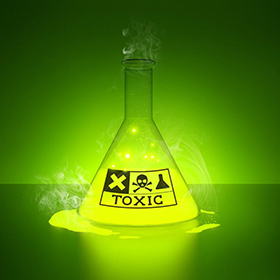
Perfluoroalkyl and polyfluoroalkyl substances (PFASs) are persistent synthetic chemicals that are widely used in industrial applications and often detectable in humans. Some PFASs have a long half-life (how long it takes for half of the chemical to break down and be eliminated from the body) in humans. For example, the half-life of perfluorooctanoate (PFOA- which is used in the production of teflon), perfluorooctane sulfonate (PFOS), and perfluorohexanesulfonate (PFHxS) has been estimated at 3.8, 5.4, and 8.5 years, respectively. That is, they will be in your body for a many years even after one exposure.
In rats, PFASs can interfere with the estrous cycle and have been linked with reduced fecundity, indicated by increased time to pregnancy (TTP) and risks of infertility. Dysfunction of menstrual cycle is a major cause of infertility and lower fecundity. Animal and human evidences suggest that PFASs affect formation of steroid hormones and hormone levels manifesting in altered menstrual cycles such as prolonged lengths. A recent epidemiologic study suggested that menstrual cycles may be lengthened in women with the highest serum concentrations of PFOA in comparison to those with the lowest concentrations.
In this study of PFASs in 950 pre-pregnant women with higher levels had increased odds of self-reported history of irregular menstrual cycle, long menstrual cycle and levels were negatively associated with self-reported history of menorrhagia. The study concluded that certain PFASs are associated with abnormal menstruation in humans. https://doi.org/10.1289/EHP1203